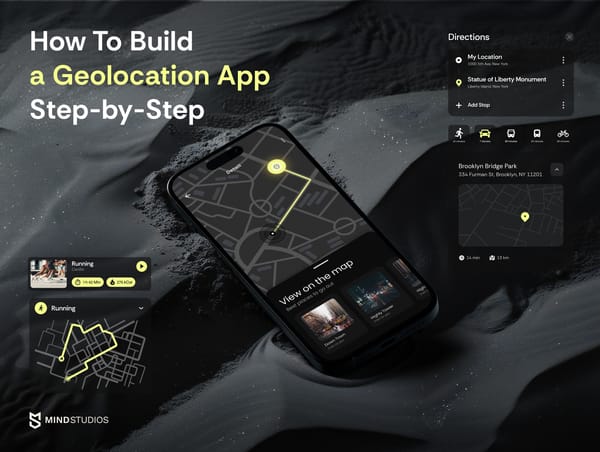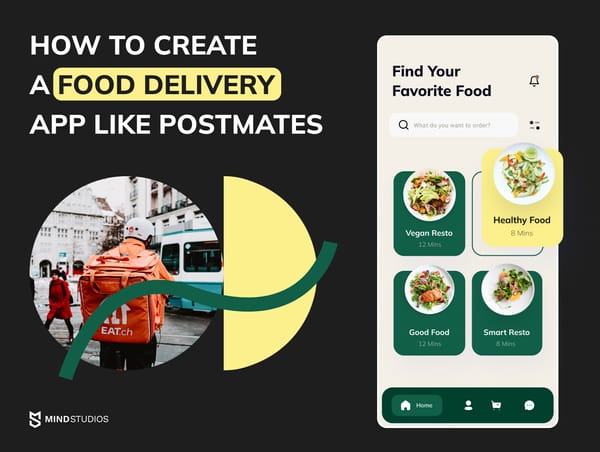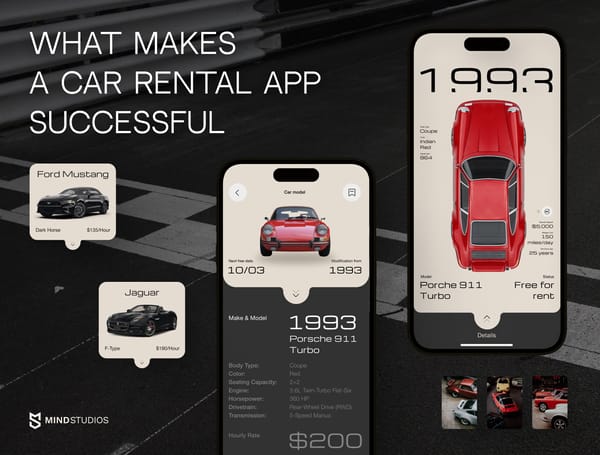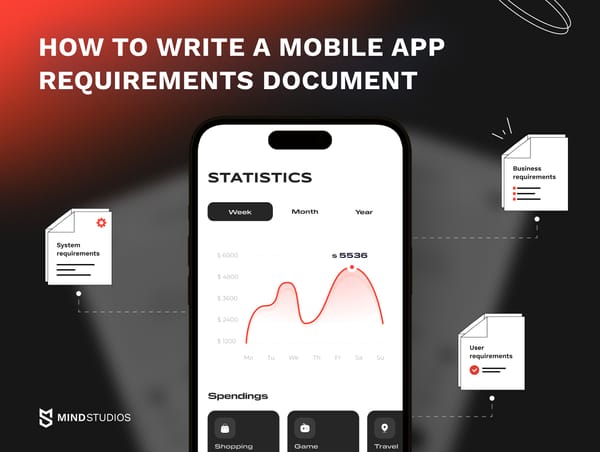Highlights:
- Developing a mobile app without a plan is very risky. Unlike a rigid business plan, the business model canvas for the mobile app is customizable and helps fully visualize and refine your whole business strategy.
- An effective business model canvas will help you avoid such common pitfalls in mobile app development as unmet user needs, inefficient resource allocation, shift in strategic focus, and many more.
- Just creating a business model canvas for an app is not enough. You should regularly update and refine it based on market changes and real-time feedback to achieve long-term success.
Developing a mobile app without having a solid business plan is similar to setting sail without a map. No matter that your idea might be great, you would struggle severely to reach your final destination.
Unfortunately, those who jump into the process straight away without a clear plan, in most cases, will just waste their time, money, and effort. According to the statistics, 90% of startups fail, with the main reason being ‘They develop products no one wants’.
At Mind Studios, we understand these challenges, and, most importantly, we have successfully navigated through them in our numerous projects.
One of such projects is Envol, a holistic healing assistance app that helps people recover from chronic illnesses and injuries, as well as transform their lives with mindfulness at a core.
Here are what healthcare experts say about the Envol app created by Mind Studios for our clients:
“Envol is an evidence-based app dedicated to revolutionizing our approach to health and wellbeing. Envol is THE digital health supplement that everybody needs.”
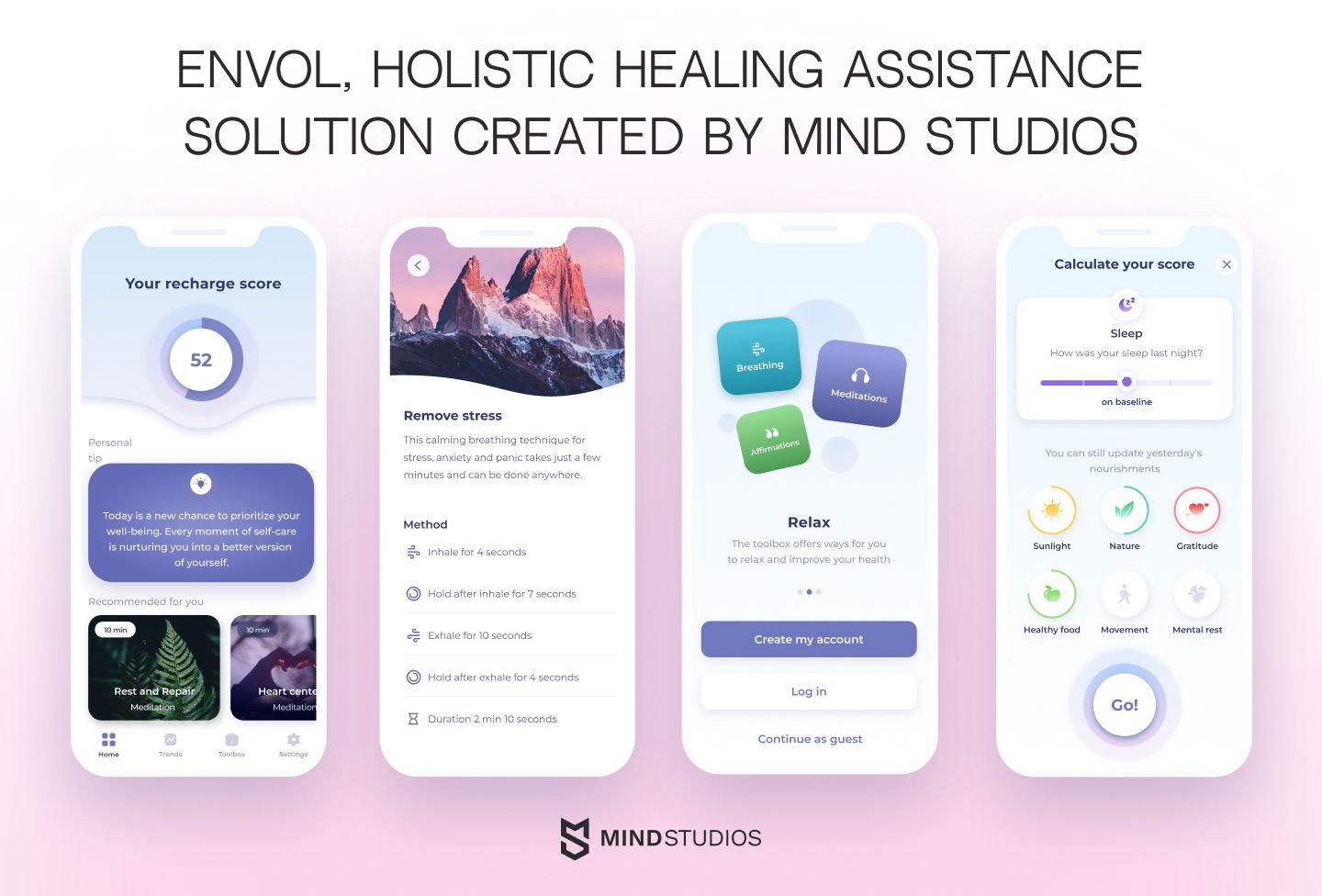
If you want to lay a successful foundation for your app, contact us, and our team will guide you from idea to market.
In this article, we will talk about how to create a successful business model for your mobile app, sharing numerous insights from our experience with Envol.
Let’s start with a brief explanation.
What, why, and when: Understanding the business model canvas for mobile apps
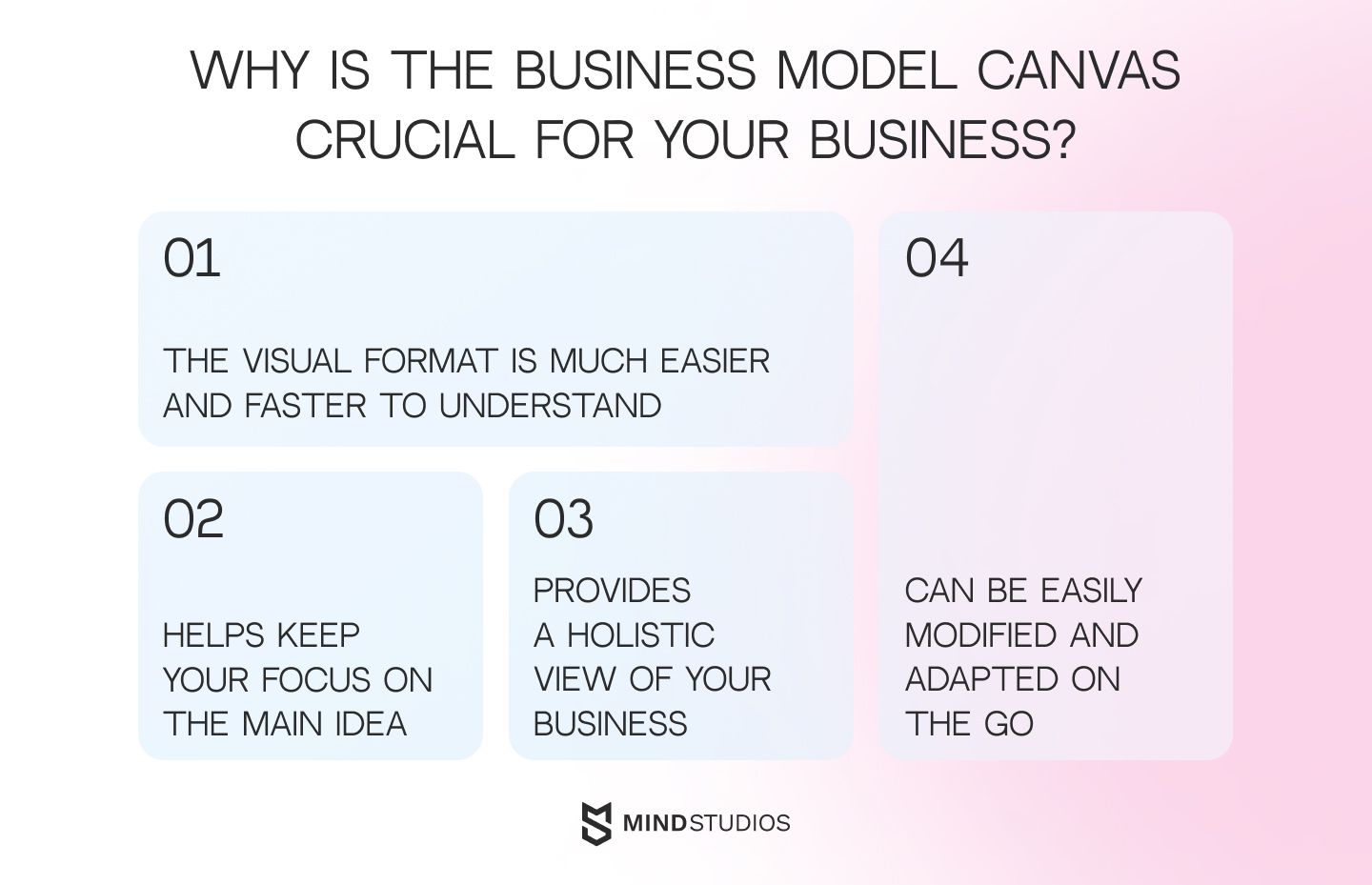
Eric Ries, entrepreneur in The Lean Startup, says:
“Startups become a business when they search for a repeatable and scalable business model. In essence, this type of business model is nothing less than a set of steps that you can track again and again, which gives you revenue.”
There are a huge number of tools that will make life easier for you when developing your mobile application. For one, you can write a business plan for your financial attractiveness to investors.
As Jeff Bezos notes, however, no business plan will survive its first encounter with reality. There will always be something unexpected. Reality will never go according to plan. It needs something more flexible, something that can be modified.
Therefore, in the early stages of launching your mobile application, we recommend starting from a business model canvas for an app (for example, Uber business model canvas).
So, what is a business model canvas, and why is it crucial for your business?
The business model canvas for the mobile app is basically a strategic management tool that helps you to visualize, design, as well as update your business model. It consists of nine core elements such as value proposition, customer segments, channels, customer relationships, revenue streams, key resources, key activities, key partnerships, and cost structure.
Here are just a few reasons why we think it’s crucial for businesses:
- It transforms the traditional material of a business plan into a one-page diagram, which helps you keep your focus on the main idea.
- As it comes in the diagram form, you can easily modify and adapt it if needed.
- Having a visual format is much easier and faster to understand than text, making it more accessible to everyone.
- It gives you a holistic view of your whole business, ensuring that all the elements are aligned.
- With it, you can refine and test your business model anytime, making adjustments based on feedback.
The risks of skipping a business model canvas for your app
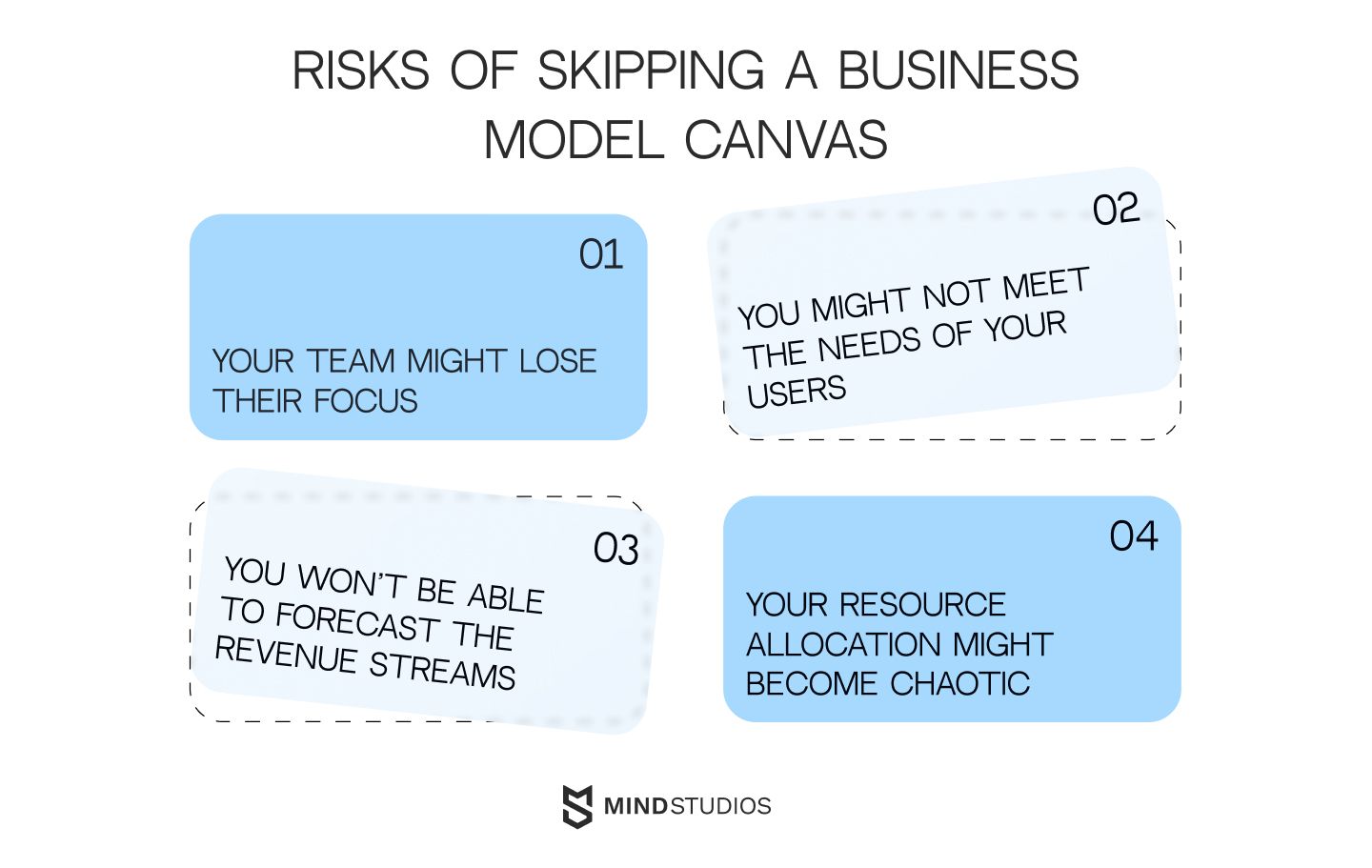
Picture this: you are setting out on a journey across the ocean, but you have only a vague destination idea. Your crew is sturdy, the ship is ready, but you don’t have a clear course.
This is exactly how it goes with developing a mobile app without a business model canvas for an app. No matter if you have the best crew and the newest ship, without a defined course, reaching your destination will be a matter of luck and not skill.
Without a plan, your team might feel lost as they don’t understand the goals of your project and how to achieve them. This leads to confusion and inefficiency. What’s worse, you can create an app that doesn’t meet the needs of your target audience.
Without a structured approach, you won’t be able to forecast revenue streams, and managing your costs can become a guessing game. This may lead to financial turbulence that your app might not survive. Your resource allocation can also become chaotic, leading to you wasting time and money on inefficient solutions.
Why business plan won’t help you in such a case?
Traditional business plans are quite rigid, meaning they’re hard to change or adapt. Unlike them, a business model canvas is flexible and allows you to correct your course based on real-time feedback.
Mind Studios’ insight: Make sure all the stakeholders take part in the creation of a business model canvas. This way, you will foster a sense of ownership as well as alignment on project goals.
App business model canvas
The business model canvas is your tool to turn from idea to market.
An app business model canvas is an excellent visual tool that describes the value proposition of your product, its structure, your customers, and the financial part of your business. This diagram allows you to document the entire shape of your business model.
It’s like having a blank canvas in front of you. And here’s its brief roadmap:
- First, you need to map your ideas, starting with a value proposition, which is the heart of your app that makes it unique and desirable by users.
- Next goes customer segment identification, or simply groups of people who will significantly benefit from your app. Channels identify how exactly you need to reach your customers.
- The next step of filling your business model canvas for an app is defying the types of relationships you will have with your customers or shoppers. Will it be automated services, personal support, or maybe a combo of both?
- After this, you move to revenue streams, which is finding the ways of making money with your app (be it subscriptions, in-app purchases, ads, or something else).
- Key resources, activities, and partnerships go next. They will help you understand what exactly you need to make your app successful: the needed business activities, partnerships, or tech resources.
- Finally, you have a cost structure, which is basically understanding all the expenses involved in the app’s creation.
In addition to the traditional business model canvas proposed by Alexander Osterwalder, the Lean Canvas by Ash Maurya is also popular among startups.
At Mind Studios, we’ve witnessed firsthand how a well-defined business model canvas can transform what is merely an idea into a fully market-ready product. And Envol is a striking business model canvas example for the app. Envol’s main aim is to help two main categories of users:
- people healing from chronic illnesses and injuries, and
- those who just want to live healthy lives.
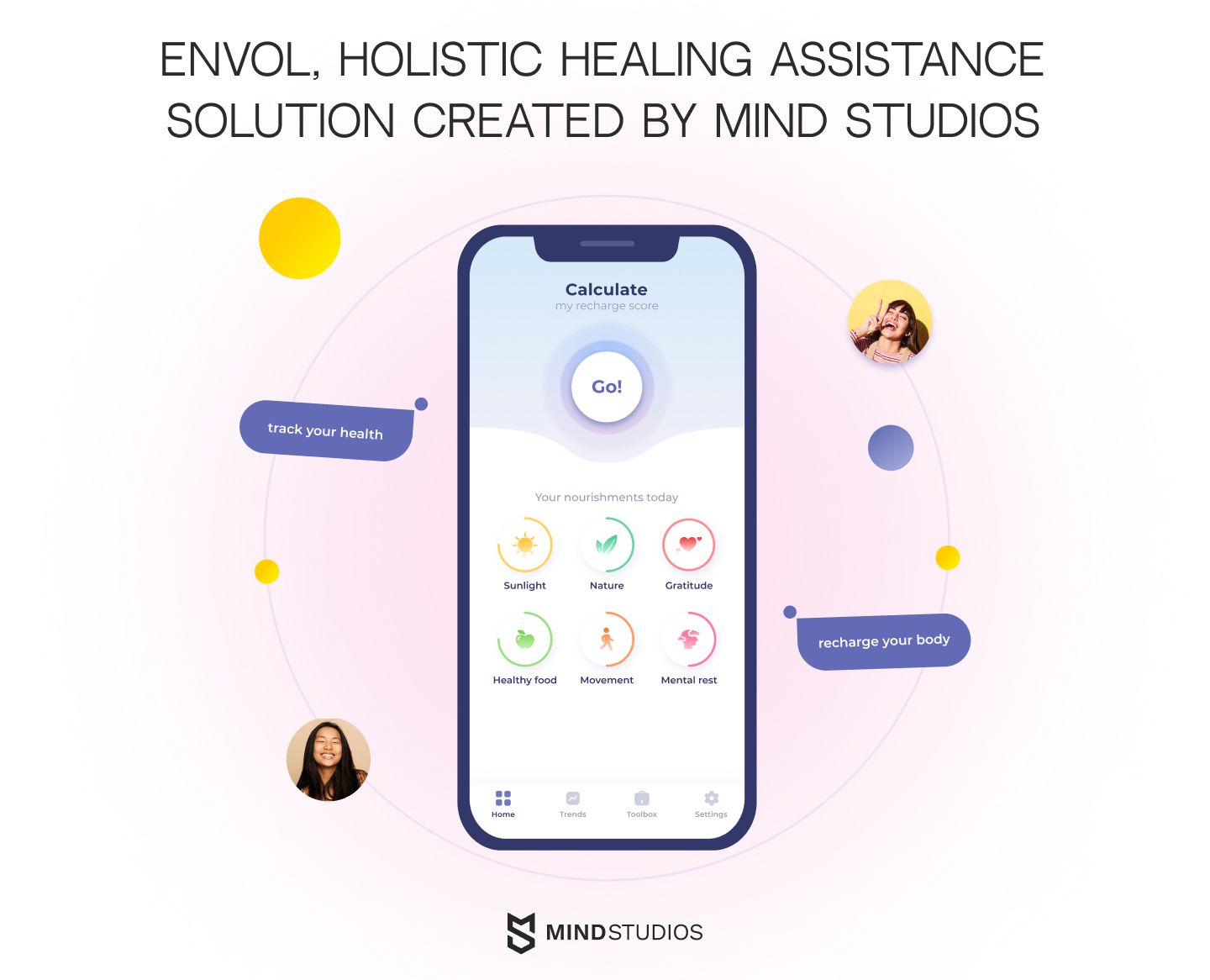
The platform is based on the unique algorithm created by one of its founders, Julie, who herself recovered from a chronic illness with the help of holistic practices. The app features different practices incorporated into a unified program that is supported by open-source medical research.
The business model canvas created for Envol helped us clearly define its value proposition, target audience, as well as monetization strategies. We will talk about it in detail later on.
If you want your app to meet the market challenges head-on, you can contact us, and we will help you transform your idea into a sustainable product.
How to fill out a business model canvas for a mobile app
The classic business model canvas for mobile app, whose structure we will describe below, can be supplemented with the following:
- The date on which things are entered into the canvas
- Information about who will be responsible for notes on the canvas since the development process is iterative
- The memorable and original name of the mobile application identified earlier
- The logo of the application that corresponds to the selected name (you can find it on the Iconfinder page embedded in the RealtimeBoard library)
- Information about the language that will be used in your application (depending on which market you’re going to launch this application in)
- A list of your team of app developers with a detailed presentation of positions
Here are just some tips from the Mind Studios team that will help you better manage your business model canvas:
- Keep a detailed record of all the changes on the business model canvas for the mobile app, including all the dates and responsible parties. This will help you track your progress and the evolution of your business model.
- Set regular updates for reviewing your canvas. The business world is highly dynamic, and your canvas should reflect the latest trends, market updates, and insights.
- Use some collaborative tools like Miro or Lucidchart for canvas creation, as they are great for real-time collaboration.
- Your canvas should be a living document, refined and adjusted every time you get feedback, test something, or get new data.
Can’t create a business model canvas yourself? We’ve got you. Get in touch with us, and we will guide you through the process of creating a working canvas tailored to your needs.
Step-by-step guide on how to develop a business model canvas for a mobile app
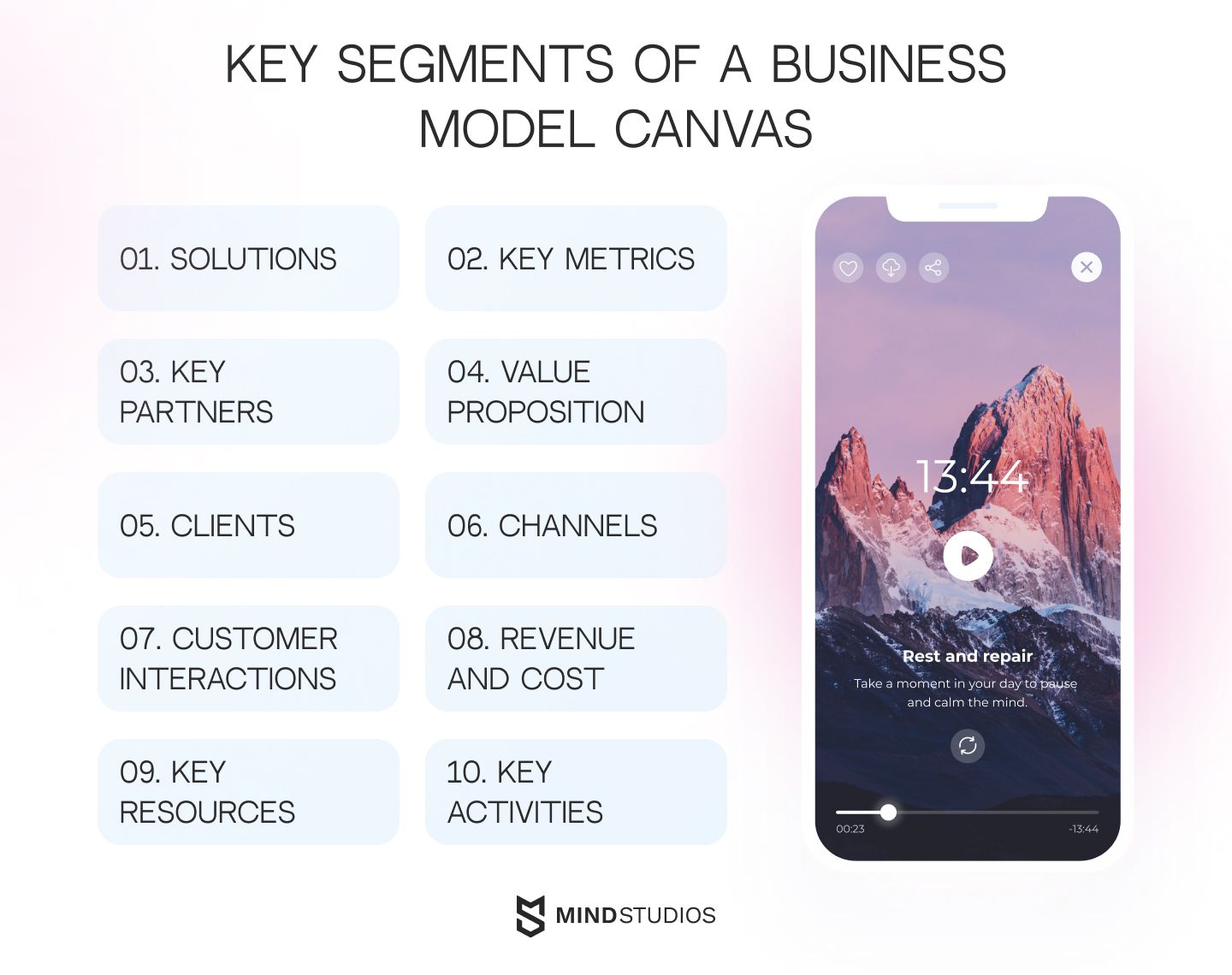
Let’s consider the strategically important segments of the business model canvas for an application with Lean Canvas elements.
We’ll supplement the theoretical part with an example of business model canvas for a mobile app from one of our projects — Envol.
Segment #1: Solutions
If you use Lean Canvas for your startup, you can add a block that describes a possible solution to each problem to your business model canvas example for an app.
We’ve identified the following problems that the Envol application solves:
- Many people with various types of injuries and illnesses struggle to find holistic and personalized healing methods that are supported by scientific research.
- Such people often feel isolated and lack the community to share their experiences and receive support.
Then, we analyzed competitors that solve similar problems:
- Headspace: Very popular app with various mindfulness and meditation techniques. It helps mental health but, unlike Envol, it lacks the focus on chronic illness recovery.
- Calm: This is a well-known app for sleep and meditation, but again, there is no dedication to holistic healing or chronic illnesses.
- HealthifyMe: This app provides personalized diet and fitness plans but still no practices for chronic illnesses.
Segment #2: Key metrics
When using Lean Canvas, don’t forget about key metrics that include the range of products or services that you want to provide. The main goal of key metrics is to determine the correct metric under which your business is operating (in other words, to show key performance indicators); if you use the wrong metric, the chances of success are likely to be very slim.
The key metrics for the Envol mobile application are:
- User engagement: active daily and monthly users
- Subscription rates: free vs. paid subscribers
- Retention rates: the number of users who continue using the app over time
- Customer feedback: user feedback and ratings
Segment #3: Key partners
This is an important step in the development of your business because it allows you to move from idea to implementation. A partner can act as a motivator for you and your model. What you need from your partner is support and a driving force that can provide growth. And you can have more than one partner. This segment is connected to and interacts with the key activity segment because each partner can engage in a certain key action.
For Envol, we defined the following key partners:
- Healthcare professionals, including doctors and holistic practitioners, who work on expert content as well as its validation.
- Wellness influencers who will promote an app to their followers.
Segment #4: Value proposition
One of the defining categories for any product is its value proposition. To motivate each segment of customers, you can look at your value proposition: Which problems does your application solve? How can you interest the customer in your product as an alternative to a previously used product?
A value proposition describes what distinguishes your product from others on the market. You can formulate your hypothesis, set their priority, and, after that, determine a quick and efficient way to prove or disprove them. In other words, your value proposition must address the product’s relevance, profit, uniqueness, and how it improves the value of your customers’ lives.
A value proposition should be based on the minimum viable product (MVP). Facebook, Spotify, Airbnb, Twitter, Pebble, Foursquare, and Dropbox are all examples of successful MVPs.
The value proposition of Envol is certainly unique. It’s a combo of scientifically-backed holistic healing methods and practices and a supportive online community. This blend perfectly addresses both emotional and physical needs of users, while also building trust and credibility.
Segment #5: Clients
The relationship between the value proposition and the client is unshakable. If your mobile application doesn't satisfy the customer's request, your business won't develop in the long run, and the market will lose interest. In addition to the concept of a minimum viable product, we introduce the concept of a minimum viable audience.
Developers often use the concept of a target group, namely a group of users defined by various criteria: age, gender, interests, or spending habits, for example. In this section, you should ask the following questions:
- Who is our potential customer?
- Where is our potential customer?
- What is our potential customer interested in?
- Why does the customer want to use our application?
To better understand the audience, you can use the Personas, a method that simulates the potential customer. In order to represent the different potential user types of your app, you can choose fictional personas, which are based on your research.
In addition, it’s effective to explore the audience visually using an empathy map. An empathy map gives you an opportunity to unite users, buyers, and partners. To create an empathy map, create four areas with the titles: thinks, sees, does, and feels — and place the user in the center. If you have several user personas, then create an empathy map for each of them. Next, fill each area with stickers that match the subject area (segment).
You can fill the empathy map with stickers, group them, and move them around to find the best solution. Mapping in this way will help you identify research deficiencies, hidden user needs, and factors that affect the behavior and choice of users. It will also help you create visual ideas.
As for the strategy of attracting clients, feedback from potential users, customers, and partners are important. Eric Ries suggests introducing customer development techniques to validate your hypotheses and evaluate all elements of your business model, including product features, prices, and distribution channels.
Among its potential clients, Envol distinguishes the following groups:
- Primary users: people who suffer from chronic illnesses or injuries/people who want to live healthier lives.
- Secondary users: Caregivers and family members who are searching for support resources.
- Tertiary users: Healthcare experts who are looking for holistic healing methods.
Segment #6: Channels
A channel is a way of conveying important information (including the value proposition) from your team to your customer. With the help of channels, this information enters your business model and becomes part of it.
As in the previous segments, we ask: Where are our customers? How can we inform them about our value proposition? From what sources do they prefer to receive new information?
Indicate in this segment that you’re developing a website where you’ll provide all information about the mobile application. If your application is intended for iOS or Android, then the respective app stores can automatically be channels.
Social media, email, SEM, SEO, viral marketing, blog targeting, sales and promotions, existing platforms, PR, social advertising, trade fairs, content marketing, community building, and offline advertising (billboards, television, radio) are all examples of channels. You should constantly search for new channels.
Here are the channels used for Envol:
- The website is used for detailed information, blog, and various resources
- Social media is used for engagement with the audience and app’s promotion
- App stores/marketplaces are used for app’s distribution through iOS and Android platforms
- Email marketing is used for updates and more personalized recommendations
Segment #7: Customer interaction
Which relationships are you building with each segment? Are these relationships personal, automated, self-serving, or retention-oriented?
When interacting with clients, your goal is to preserve and develop your relationship. The company representative’s (customer service, social media, comments in app stores) relationship with customers is defined as the interaction of the whole business with its customers.
How do you communicate with customers? In person? By phone? Over the internet?
For mobile applications, feedback is very important. It allows online identification of the problems and helps you overcome problems, thereby improving the efficiency of your operation, as well as supporting services and the application as a whole. Prepare to provide personal support to control all segments in the early stages of the startup according to the Lean Startup methodology.
In addition to developing customer personalities, as described in the clients segment, it’s useful to create a user journey map for your customers in order to be effective with regard to UX, marketing, and merchandising.
So, in conclusion, we can ask: is it sufficient to have just online and offline communication? You need to see the full picture of the interaction in order to understand what motivates customers to use your product, what customers want to get when coming to your platform, and how well they can achieve their goals by using your product. If this process of interaction is analyzed and coordinated at all stages, you will have rapid results: you will know how best to interact with your customers, and also determine the automation possibilities of this process.
Segment #8: Revenue
Determine the best revenue stream for your startup. In our article about business plans for mobile applications, we proposed consulting some methods of monetization (application fee, fee for services, fixed-rate, advertising in the mobile and web-based applications, profit, etc.). Choose which method suits your application and will benefit you financially.
As a source of revenue, Envol uses a freemium subscription model, offering both free content and features along with premium ones for a subscription fee.
Segment #9: Key resources
What resources support your mobile app business model? This segment addresses financial (accounts, securities), personnel (developers, designers, managers), material (offices, equipment), and information (software) resources — so-called strategic assets that are necessary for doing business.
You can include a list of key resources related to your business's key activities in this segment.
Intellectual property, based on your value proposition, is also a key resource and plays a decisive role in the success of your business.
Segment #10: Key activities
The key activity of your product is the action that the customer takes to achieve the value proposition. What actions does your app need to perform well? What plays a crucial role in your technical development strategy? For example, creating infrastructure is the key activity for a system such as Uber.
To find the answers to this question, you can make better consulting, quality management, design, and web development.
Among Envol's key activities are:
- continuous improvement and feature updates
- developing high-quality and scientifically-backed content
- fostering a supportive community
Segment #11: Cost
This is the time to ask what the cost of running the business is, including the cost of achieving the value proposition for users and providing key resources and partnerships.
The cost of running the business covers the cost of all segments of business activity, that is, the entire business model canvas for an application. You must cover salaries for your team, insurance, software, content, and any additional costs. After you sum up all the costs and get the total price, you can add it to the business model canvas for a mobile application.
Remember that the pricing of your product is one of the fundamental elements of your business model, since the price is the main criterion for customers when choosing a product. When choosing your pricing tactics, take the advice of Steve Blank from his book.
How to use business model canvas
We’ve briefly looked at every segment of the classic business model canvas and gotten acquainted with the elements of each segment.
Now, you can begin working out each segment of the canvas using sticky notes, on which you can write your hypotheses and explore benefits of the business model canvas.
Your next goal is to confirm or disprove these hypotheses by conducting tests with consumers. It isn’t critical if your initial assumptions turn out to be wrong. Use an iterative process to confirm all aspects of your mobile application. Obviously, the final business model canvas for application will differ from the initial structure.
Mind Studios’ insight: You should engage with your user base regularly. By gathering their feedback, you will be able to stay attuned to their changing needs. The combo of continuous feedback and iteration is a key to your long-term success.
Wrapping up
Remember what Steve Jobs said:
From what I’ve come across, following my curiosity and intuition turned out to be priceless later.
Enjoy the process of creating your product using the business model canvas. This powerful and universal tool will allow you to visualize all the information you need for mobile app development.
Without a working business model, you can’t create a startup. Your business model must be tested. Otherwise, you’ll lose money finding a relevant model.
And how can you prove that your business model works? A unique product is the result of the combination of all elements of your model, namely the value that the product offers to customers, the profit formula, and key resources.
Creating and working out all the details of the business model canvas for the mobile app requires a lot of time, attention, effort, and patience. Of course, you can use a business model canvas template, but is it enough? After all, you need to take into account all the important aspects of application development in order to monitor the overall picture of the process and to transform the classic canvas to reflect your project requirements.
At Mind Studios, we know that your business model for mobile applications is the sails to the wind that is your business idea, and the canvas is a powerful mast that supports those sails. With the right methods, we can guide your mobile application to success!

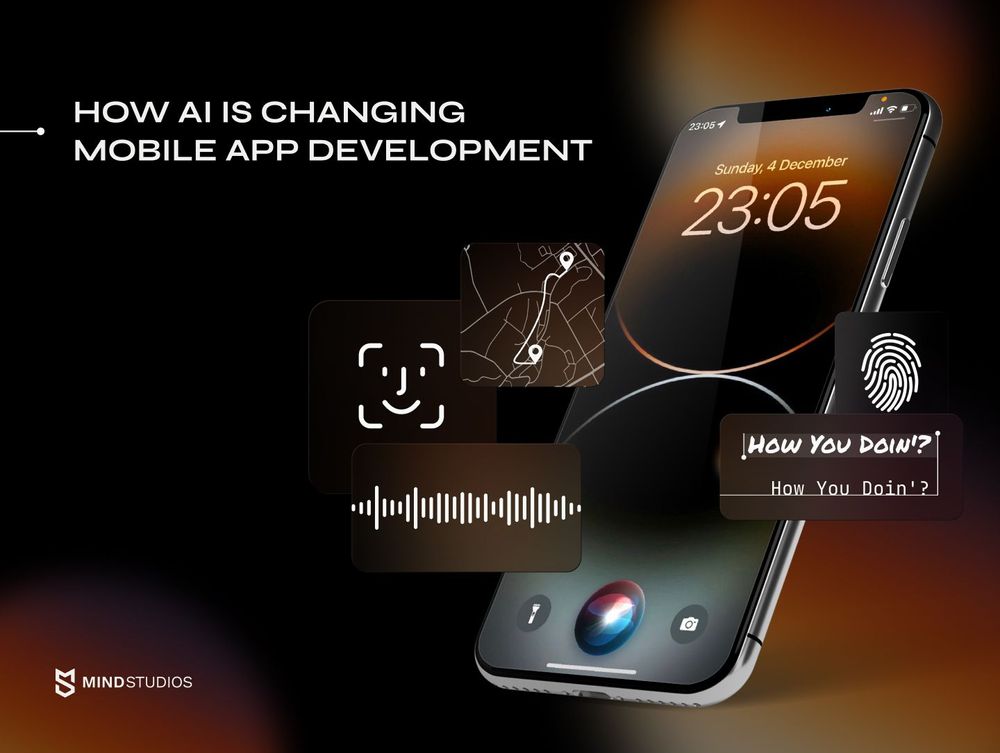
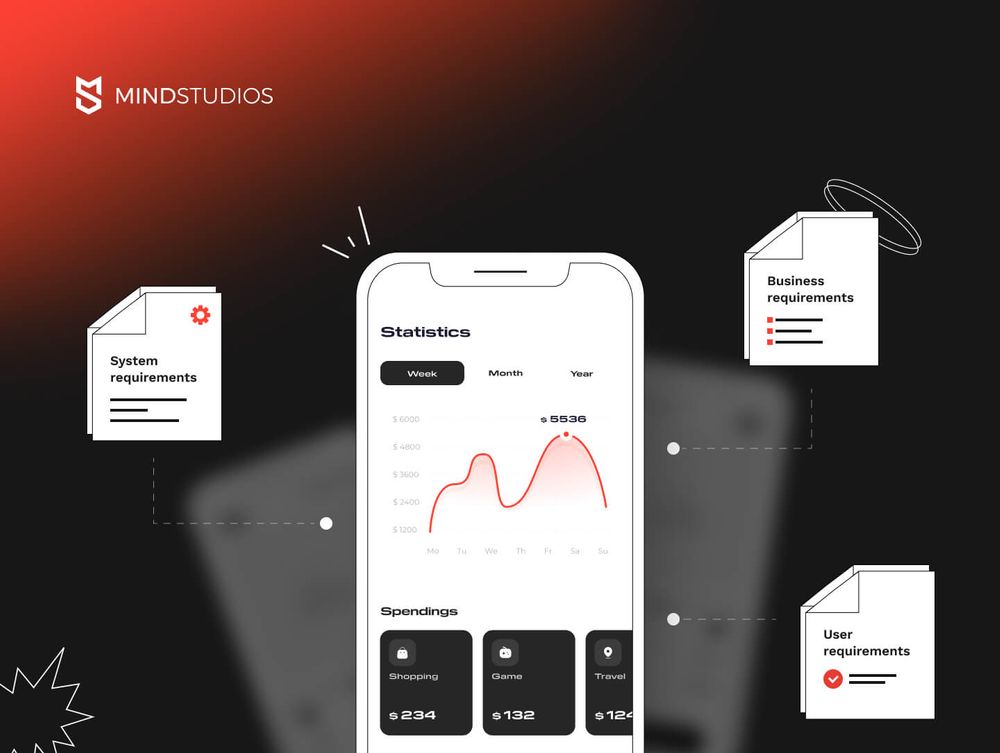
![How to Create an On-Demand Medicine Delivery App [Expert Guide]](https://themindstudios.com/blog/content/images/size/w600/2025/03/IMG-1-Cover-6.jpg)
